Singer Sewing Machine Models by Year from 1800-
When it comes to sewing machines, Singer is a name that resonates with countless home sewers. Today we are diving into Singer Sewing Machine Models by year.
Whether you recall fond memories of your mother or grandmother skillfully operating an old Singer machine during your childhood or currently possessing a contemporary Singer model of your own, the brand’s association with sewing is undeniable.
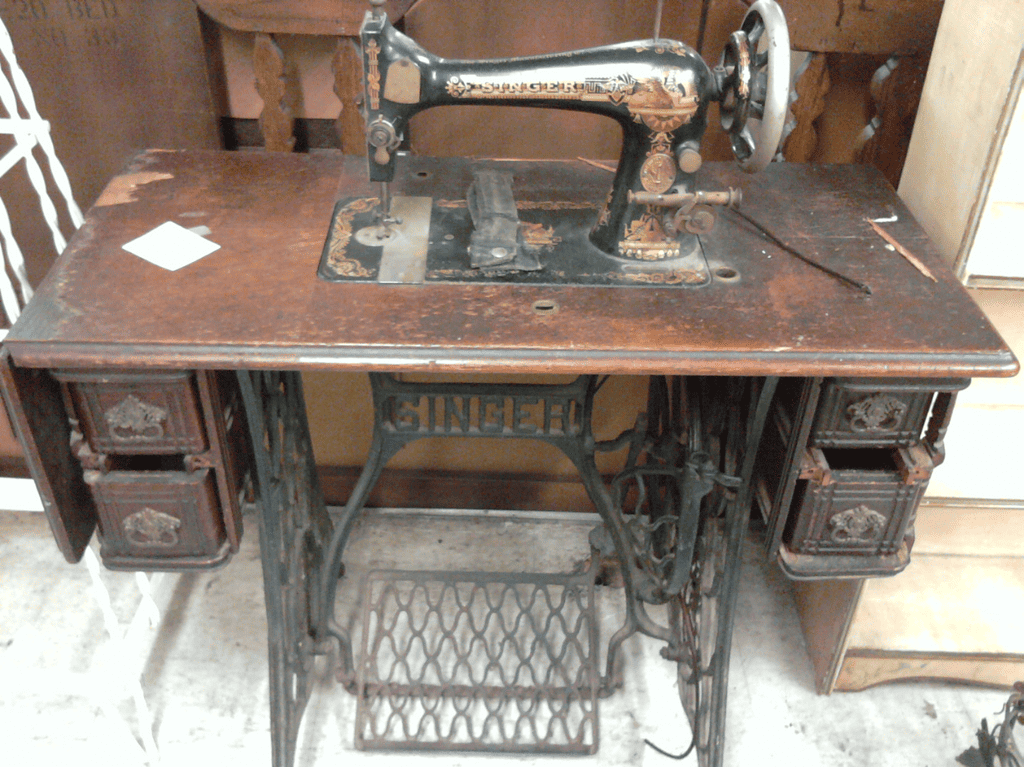
If you’re eager to delve deeper into the world of this beloved brand, there’s an abundance of knowledge to acquire regarding Singer sewing machine models, its rich history, and the value they hold.
With its establishment dating back to 1851, Singer embarked on a remarkable journey of sewing machine innovation throughout the early 20th century.
Noteworthy inventions such as the vibrating shuttle and the introduction of the first electric-powered machine were credited to Singer’s pioneering spirit.
Over the course of more than a century, Singer consistently held its position as one of the world’s leading vendors of sewing machines. Even today, the Singer Company thrives, offering a wide range of popular sewing machines to meet the needs of modern users.
Within the contents of this article, you will uncover the intriguing origins of this renowned brand, tracing its humble beginnings.
Additionally, you will discover the enduring popularity of certain Singer models in the present day.
Furthermore, you’ll gain insights into the price range associated with acquiring vintage Singer models. Prepare to delve into the captivating history, current popularity, and estimated costs of owning an older Singer sewing machine.
Table of Contents
History of Singer Sewing Machines
Having made their debut in 1850 and maintaining their popularity to this day, Singer sewing machines boast a rich and eventful history.
The company, originally known as I.M. Singer and Co., was established by Isaac Merritt Singer in 1850. Despite common belief, it is important to note that Singer did not invent the first sewing machine for domestic use, dispelling a popular misconception.
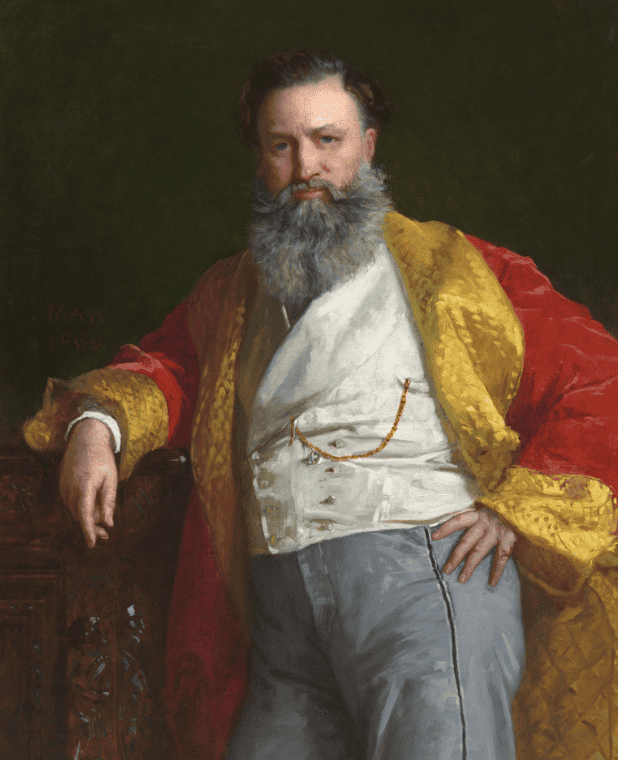
Nonetheless, Singer’s contributions to the sewing machine industry are significant and enduring.
Rather than being the inventor of the initial domestic sewing machine, Isaac Merritt Singer made notable modifications to a patented design originally created by Elias Howe.
Singer’s expertise lay in his ability to improve upon the existing design, resulting in valuable modifications that he patented.
However, it was Singer’s astute business model that played a pivotal role in the immense success of the company.
His entrepreneurial acumen and strategic approach were instrumental in establishing Singer as a prominent force in the sewing machine industry.
Isaac Merritt Singer’s distinctive contribution was the introduction of the first widely embraced installment payment plan for sewing machines.
Additionally, this revolutionary approach made sewing machines accessible and affordable to the average individual, a significant departure from the previous scenario where only factories and businesses possessed such equipment.
By implementing this innovative payment system, Singer democratized the ownership of sewing machines, allowing everyday people to bring these invaluable devices into their homes.
This pivotal move transformed the sewing machine from a luxury reserved for industrial use to a household necessity enjoyed by countless individuals.

In addition to his groundbreaking installment payment plan, Singer recognized the importance of promoting the indispensability of sewing machines in every household.
The company persistently worked towards developing sewing machine models that were not only easily accessible but also more portable, catering to the evolving needs of consumers.
Singer’s success was further bolstered by their robust door-to-door sales campaigns, reaching out directly to potential customers.
Additionally, frequent updates and enhancements to their sewing machine models ensured a consistent demand for newer models, fostering customer loyalty and continued sales.
This strategic combination of effective marketing, product innovation, and proactive customer engagement played a crucial role in Singer’s sustained growth and popularity.
At a time when sewing machine innovation and the industrial revolution were at their zenith in the mid-19th century, Singer astutely capitalized on this opportune moment with a revolutionary business model.
The convergence of these factors provided Singer with fertile ground to establish his remarkable venture.
However, it is worth noting that Singer’s personal life mirrored the flamboyance of his business ideas, adding an intriguing layer to his overall persona.
The enthralling aspects of Isaac Merritt Singer’s personal life add an extra dimension to the narrative, further enhancing the fascination surrounding this iconic figure.
Isaac Merritt Singer, hailing from an immigrant background, embarked on his career as a Shakespearean actor.
Despite transitioning into a successful businessman in his later years, his flamboyant personality remained undiminished.
As a testament to his extravagant nature, Singer designed and paraded around in a strikingly vibrant yellow carriage capable of accommodating over thirty individuals.
This grand display of wealth served as a means for him to showcase his prosperity during the latter stages of his life.
The vivid details of Singer’s larger-than-life character and his penchant for opulence add a captivating allure to his fascinating journey.
Throughout his nomadic existence as an actor, Isaac Merritt Singer engaged in simultaneous romantic relationships with multiple women.
This audacious pattern persisted even more conspicuously as he achieved fame and fortune as a prosperous businessman. Singer’s propensity for such arrangements became more pronounced, reflecting his flamboyant lifestyle and unrestrained approach to personal relationships.
The intricacies of Singer’s love life, marked by his involvement with numerous women, provide a captivating glimpse into the complexities of his character and the lavishness that accompanied his rise to prominence.
In the 1860s, I.M. Singer found himself compelled to relinquish his position as the head of his own company due to the brewing scandal surrounding his extramarital affairs.
Furthermore, as his life journey drew to a close, it was revealed that Singer had fathered a total of 22 children with five different women.
The unexpected revelation sheds light on the astonishingly scandalous undercurrents that intertwined with the seemingly unassuming world of sewing machines.
The captivating blend of personal affairs and the realm of Singer’s sewing machine empire adds a surprising and intriguing dimension to his life story.
Following I.M. Singer passing in 1875, the company he established persevered and prospered. Evolving from I.M. Singer and Co., it transformed into the Singer Manufacturing Company and eventually came to be known as the Singer Company.
Demonstrating remarkable longevity, the company exerted its dominance over the global sewing market for an impressive century, from its inception in 1851 until the 1950s.
Throughout this extensive period, Singer’s influence and innovative products remained unrivaled, solidifying its position as a prominent force within the sewing industry.
In the period leading up to World War I, the Singer Company achieved a remarkable feat by surpassing the combined sales of all other sewing machine companies across the globe.
This unparalleled success solidified Singer’s unrivaled position as the preeminent force in the sewing machine industry.
The company’s ability to outperform its competitors in terms of sales volume is a testament to the widespread popularity and trust placed in Singer sewing machines during that time. Such an achievement further underscored the brand’s dominance and market leadership on a global scale.
One intriguing aspect of the Singer Company’s influence is its notable impact on three significant wars.
During the Civil War, the company played a crucial role by supporting the Union Army. Singer provided sewing machines that were used to sew uniforms for the soldiers, showcasing the brand’s contribution to the war effort.
This partnership highlights the vital role that sewing machines played in facilitating efficient clothing production for the military.
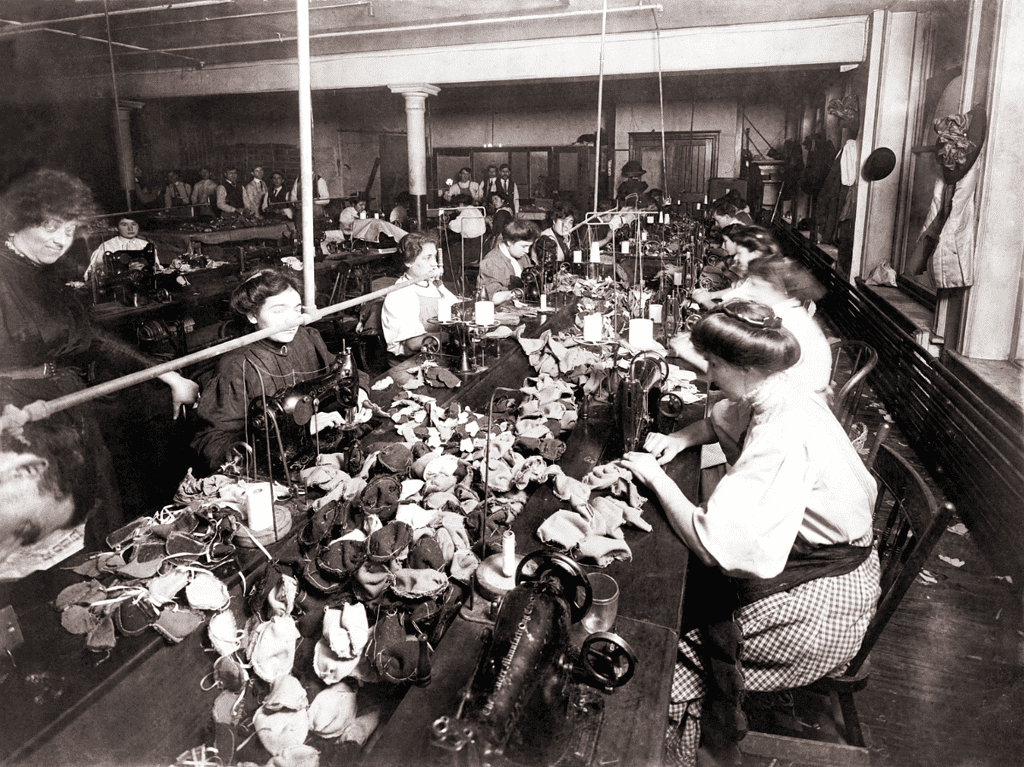
The Singer Company’s involvement in such historical events underscores the brand’s widespread significance and its ability to adapt and contribute to various sectors, even in times of conflict.
During both World Wars, the Singer Company temporarily halted sewing machine production and pivoted towards manufacturing items under government contracts.
In a notable shift, Singer focused on producing goods that were essential for the war efforts. Under these contracts, the company diversified its production to include items such as bombs and munitions.
This shift in manufacturing reflected Singer’s commitment to supporting the war endeavors and contributing to the defense industry.
The company’s flexibility and adaptability during these tumultuous periods underscore its willingness to contribute to the larger cause and play a vital role beyond its traditional sewing machine production.
While the early 20th century witnessed the tumult of war, it also witnessed a surge in innovative sewing machine designs.
Notably, this era brought forth the invention of the first electric-powered domestic sewing machine, revolutionizing the way people approached sewing at home.
This groundbreaking advancement in sewing technology marked a significant milestone in the history of sewing machines, offering greater convenience and efficiency to users.
The continued drive for innovation amidst the challenges of the time underscores the resilience and ingenuity of the sewing machine industry during this period.
The Featherweight 221, famously showcased and sold at the Chicago World Fair in 1934, emerged as a notable exemplar of Singer sewing machines’ innovation during that era.
Distinguished by its incorporation of lightweight aluminum parts, this model epitomized the commitment to advancement and efficiency embraced by Singer.
The Featherweight 221 not only represented a significant technological achievement but also garnered widespread acclaim for its portability and ease of use.
Its introduction at the Chicago World Fair further solidified Singer’s reputation as a leading force in the sewing machine industry, captivating the imagination of sewing enthusiasts and leaving a lasting impression on the history of sewing machine design.
Following the conclusion of World War II, the sewing machine manufacturing landscape witnessed a sharp escalation in overseas competition.
European and Japanese manufacturers entered the market with a surge of new sewing machine offerings. This unprecedented level of competition exerted significant pressure on Singer, displacing the company from its long-held position at the top of the market.
However, despite the challenges, Singer has managed to maintain its popularity as a prominent sewing machine manufacturer to this day.
The brand’s enduring appeal, reliability, and commitment to innovation have contributed to its continued success. Singer has adapted to the evolving needs of modern sewers, introducing new models and incorporating advanced features while retaining the legacy and reputation it has built over the years.
As a result, Singer remains a favored choice among sewing enthusiasts and continues to be a leading name in the sewing machine industry.
Singer Sewing Machine Models
Since Isaac Singer’s first sewing machine sale in 1850, the Singer Company has consistently patented and sold an extensive array of models.
Among these, certain antique models have garnered popularity due to their rarity and collectibility.
On the other hand, numerous vintage models continue to remain sought after for practical sewing purposes owing to their exceptional quality.
Now, let’s delve into the details and explore a selection of Singer Sewing Machine Models by Year.
Popular Antique Models
The term “antique” encompasses any sewing machine manufactured before the year 1900, encompassing a vast timespan and a multitude of distinct Singer models.
Throughout this era, the Singer Company consistently introduced machines featuring new and enhanced designs, showcasing their commitment to innovation.
For instance, in 1885, Singer achieved a significant milestone by selling the first sewing machine equipped with a vibrating shuttle, a notable advancement in sewing technology.
Then, in 1889, they further pushed the boundaries of innovation by producing the first functional electric sewing machine, revolutionizing the way people sewed.

While obtaining a comprehensive list of all Singer sewing machine models from this period can prove challenging, a few models have stood out among the rest.
Notably, when looking at Singer Sewing Machine Models by Year, the Turtleback and the Fiddlebase models have garnered attention and recognition for their unique characteristics and design features.
The Turtleback and Fiddlebase models have carved their place in sewing machine history, capturing the imagination of enthusiasts and collectors alike with their distinct appearance and mechanical ingenuity.
These models serve as shining examples of Singer’s craftsmanship and enduring legacy during this fascinating era of sewing machine development.
The endearing nicknames associated with Singer machines have developed organically over time, often inspired by the unique characteristics or appearance of the machines themselves.
These affectionate monikers arise from the genuine admiration and fascination that sewing enthusiasts and collectors hold for these iconic machines.
Take, for instance, the “Fiddlebase” nickname. It originates from the machine’s distinct feature—a striking violin-shaped metal plate that secures it to its wooden cabinet.
The graceful resemblance to a fiddle or violin evokes a sense of beauty and craftsmanship, leading to the endearing nickname.
These charming and whimsical nicknames add a personal touch to Singer Sewing machine models by year, reflecting the affectionate connection that enthusiasts feel towards their Singer models.
They not only highlight the machine’s physical attributes but also serve as a testament to the enduring legacy and design excellence of Singer sewing machines.
The Turtleback
Introduced in 1856, the Turtleback was a significant milestone for Singer as it marked their first sewing machine specifically designed for domestic use.
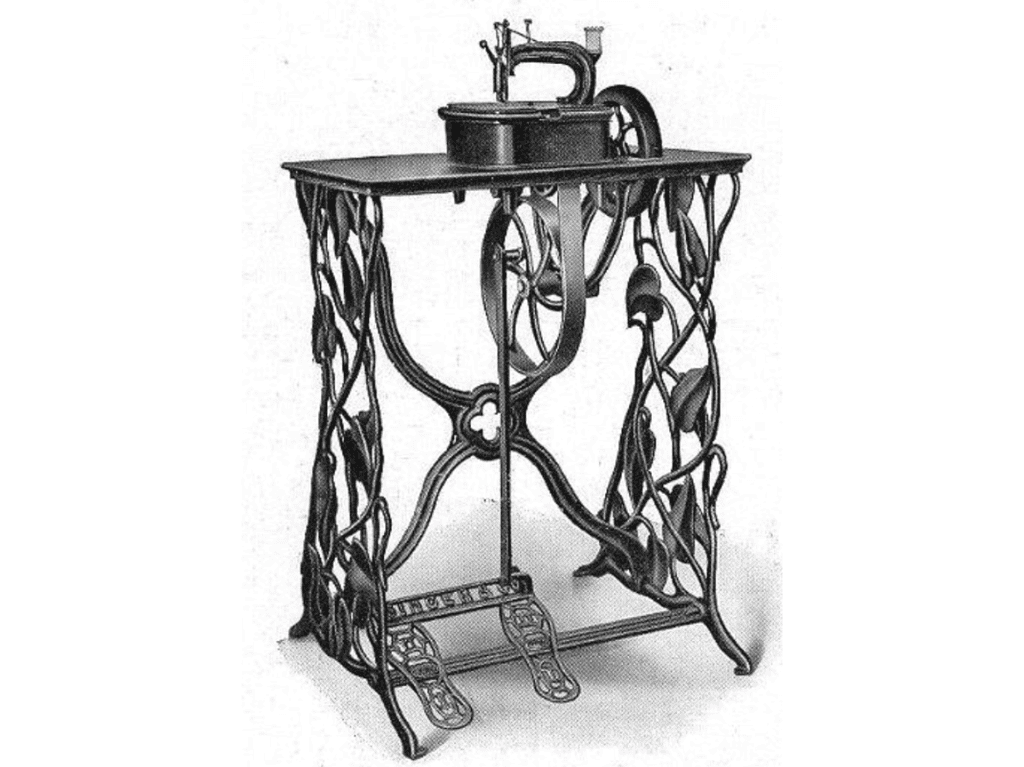
This model also introduced the novel inclusion of an iron treadle, which added to its functionality and ease of use.
Despite having a few inherent flaws, the Turtleback has garnered considerable attention and remains highly sought-after among collectors and sewing machine enthusiasts today, primarily due to its rarity and historical significance.
This antique machine stands as a testament to Singer’s early foray into the realm of household sewing machines and holds a special place in the annals of sewing machine history.
Singer Fiddlebase
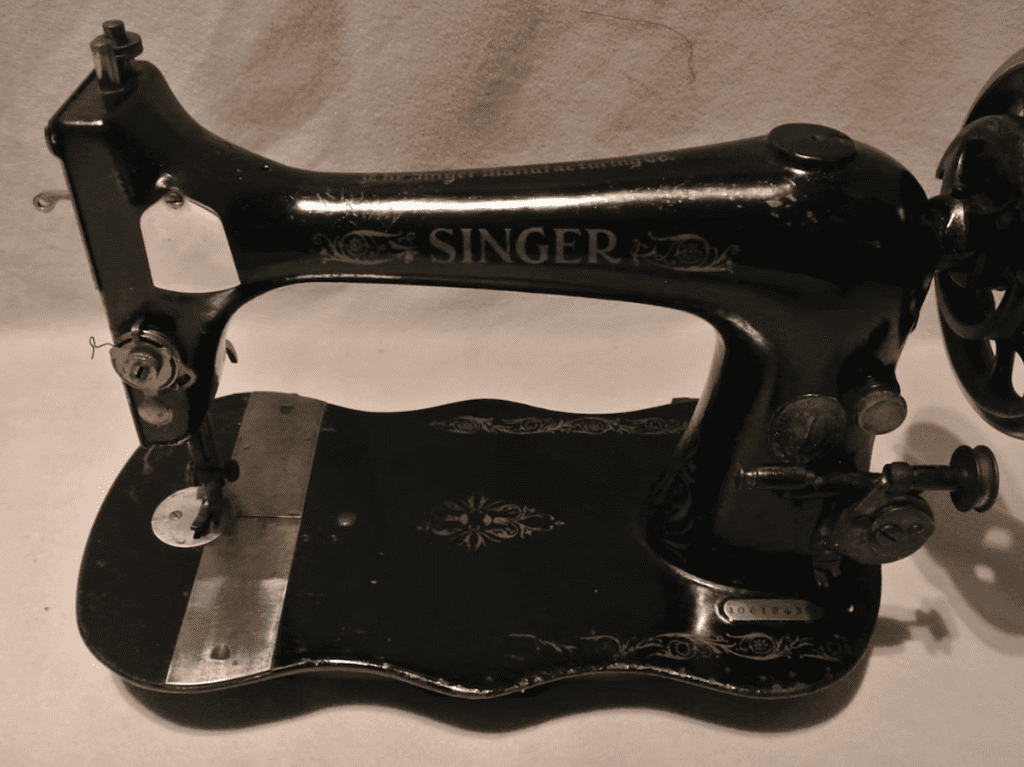
The Singer 12, affectionately known as the Fiddlebase, achieved long-lasting success and continues to be treasured as a prized antique.
It held the distinction of being the first reliable lockstitch sewing machine available on the market, capable of effortlessly stitching through multiple layers of fabric.
During its time, the innovations introduced by the Singer 12 amazed the world. This model remained in circulation from the end of the Civil War until the beginning of the 20th century.
Its enduring popularity and historical significance make it a highly sought-after piece among antique enthusiasts.
While the Fiddlebase model remains a coveted item in the antique community, it has become relatively more accessible in recent times due to the substantial number of units sold over the years.
Remarkably, despite its age, it is not uncommon to find Fiddlebase models that are still functional today.
Thanks to their robust metal construction and excellent design, many of these machines have withstood the test of time and continue to demonstrate their durability and sewing capabilities among Singer sewing machine models by year.
Popular Vintage Models
Between the years 1900 and 1960, the Singer company produced an extensive range of sewing machine models, which are now classified as vintage.
These vintage Singer models are characterized by their sturdy metal interiors, robust construction, and remarkable reliability.
If you have had the opportunity to own a vintage Singer machine, you are likely familiar with their reputation for longevity—they seem to run forever!
While numerous vintage Singer sewing machines continue to be cherished by sewing enthusiasts, a few models have garnered particular recognition.
Among them, the Singer 221, 401a, and 66 models stand out as some of the most well-known vintage Singer machines. These models have left an indelible mark on the sewing community, celebrated for their quality craftsmanship, impressive performance, and enduring appeal.
Their popularity and continued admiration among vintage sewing machine collectors and users serve as a testament to the enduring legacy of Singer’s craftsmanship and innovation.
Singer Featherweight
During the early 20th century, the Singer Company achieved great success with its iconic Featherweight sewing machine.
Officially known as Model 221, the Featherweight garnered worldwide admiration for its remarkable innovation.
This model broke away from the traditional heavy cast steel construction by utilizing lightweight cast aluminum, resulting in a machine that weighed a mere eleven pounds.
In addition to its lightweight design, the Featherweight boasted several unique features. Its hinged and flip-up bed extension allowed convenient access to the bobbin case, enhancing ease of use.
Furthermore, the placement of its distinctive light set it apart from later models like the Singer 66, making it easily recognizable.
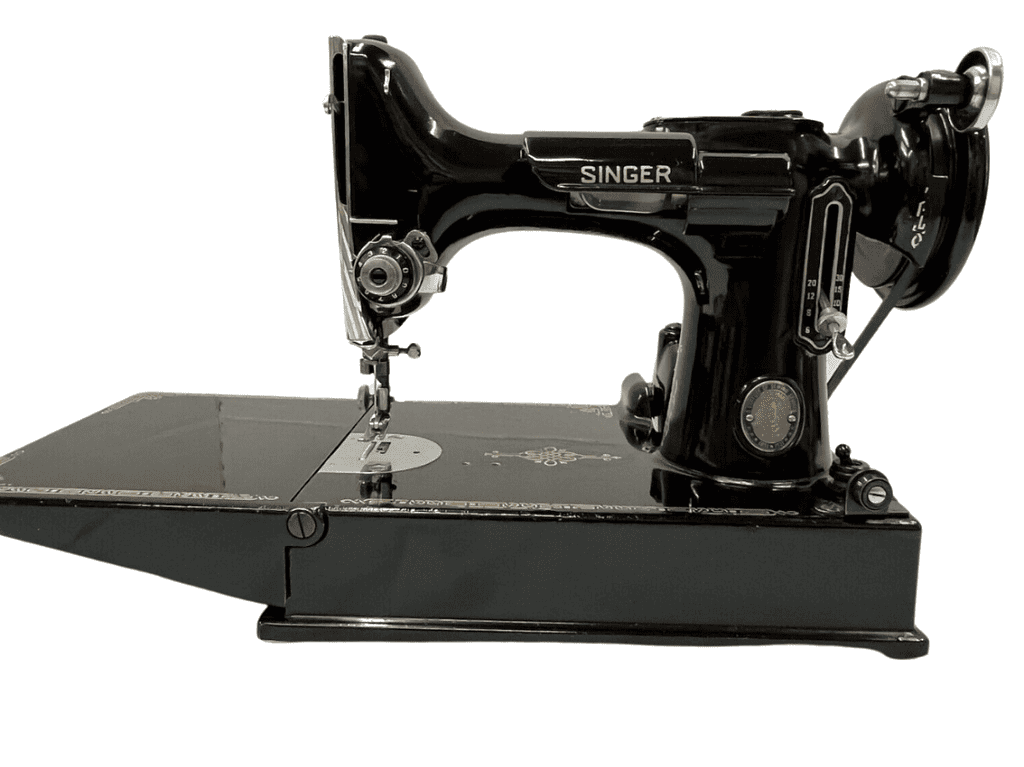
The company introduced the Featherweight model in 1933, during the interwar period. Building upon this success, Singer went on to release the 222K model, which was manufactured and marketed from their factory in Scotland.
The 222K remains highly beloved to this day and has earned the additional nickname of the “Queen of the Singers,” a testament to its enduring popularity and exceptional craftsmanship.
If you happen to come across a Featherweight sewing machine, consider yourself fortunate and hold onto it tightly!
These machines, despite their age, often continue to function flawlessly and are highly sought after. Quilters, in particular, hold a special fondness for these models due to their exceptional ability to effortlessly sew through thick fabrics that can challenge modern machines.
Moreover, the collectibility of Featherweight sewing machines contributes to their elevated value in today’s market.
These beauties carry a significant price tag, reflecting their desirability among sewing machine collectors and enthusiasts.
So, if you are lucky enough to acquire a Featherweight sewing machine, you not only gain a reliable workhorse but also an esteemed piece of sewing history.
Cherish it for its enduring charm, remarkable sewing capabilities, and the joy it brings to quilters and sewing enthusiasts alike.
The Slant-O-Matic
Shifting our focus to the 1950s, two Singer models that have retained their popularity are the 401a and 403a.
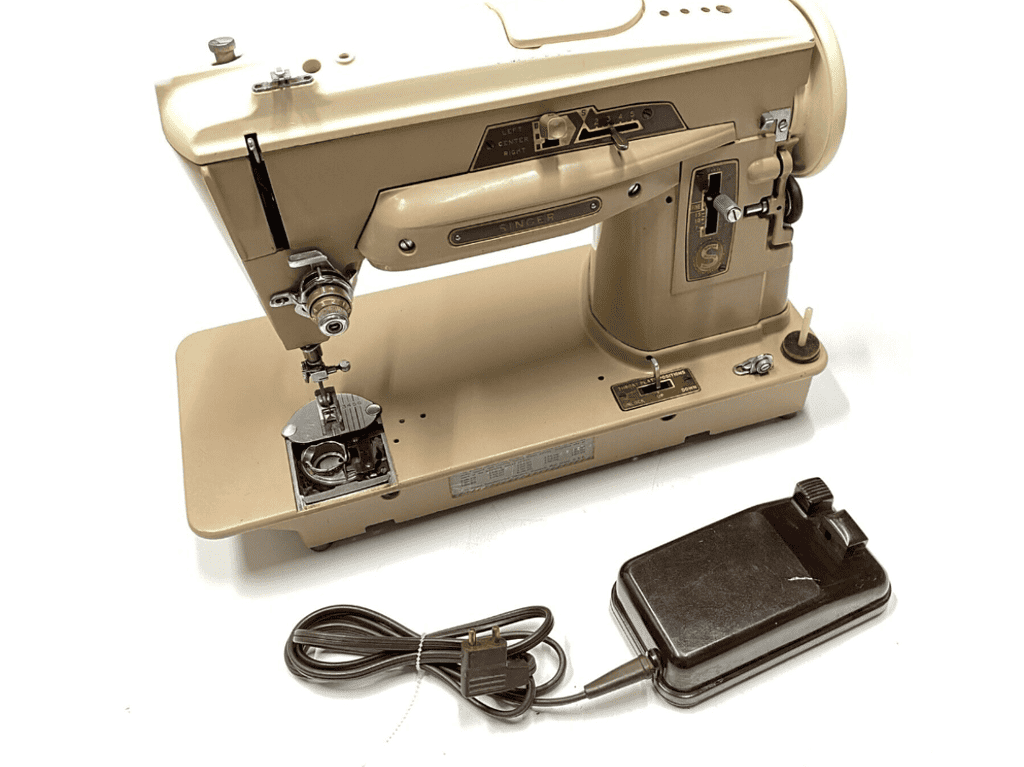
These machines are highly regarded for their robust steel construction and their ability to perform zigzag stitches, which adds versatility to their capabilities.
The 401a, famously known as the Slant-O-Matic, stands out for its distinctive angled needle design. This innovative feature provides easier access to the needle plate and presser foot, enhancing the overall sewing experience.
Additionally, the 401a incorporates internal discs known as cams, which play a crucial role in redirecting the needle and presser foot, enabling a variety of stitch patterns to be achieved.
The combination of solid steel components, zigzag stitching capability, and the unique features of the Slant-O-Matic design have made the 401a and 403a models enduring favorites among sewing enthusiasts and collectors.
Their durability, precision, and stitch versatility continue to captivate sewers even after all these years.
In the realm of vintage sewing machines, the enduring appeal of the 401a and 403a models lies primarily in their remarkable durability and reliability.
These machines are as solid as a rock and have proven their ability to withstand the test of time, ensuring they will continue running for generations to come.
Among vintage sewing machine enthusiasts, the 403a is often hailed as an exceptional model, representing a pinnacle of craftsmanship and design.
Its enduring popularity stems from its solid construction, precise performance, and the joy it brings to sewing enthusiasts. The 403a remains highly sought after, not only for its usability but also for its collectibility.
Owning a 403a is like owning a piece of sewing history, and its allure extends to both practical sewing applications and the appreciation of its vintage charm.
If you have a penchant for vintage sewing machines, it would be challenging to find a better model than the 403a. Its reputation for reliability, coupled with its collectible status, ensures that it continues to captivate the hearts of sewing enthusiasts and collectors alike.
1960-1980 Models
During the 1960s, Singer faced formidable competition from overseas manufacturers, which led them to rework several of their beloved classic models.
As a result, sewing machines from this era may not receive as much attention from sewers and collectors compared to earlier models.
However, there are notable machines from the 1960s that still capture interest. The Slant-O-Matic 500 models, with their streamlined and space-age appearance, are particularly intriguing.
These machines, devoid of computerization, typically offer a range of stitching patterns and retain a predominantly metal construction with cams and gears housed inside.
Moving into the 1970s, some sewing machine models may leave enthusiasts feeling less impressed.
Like many other manufacturers, Singer began transitioning from predominantly metal construction for cams and gears to incorporating more nylon and plastic parts during this decade.
However, it is worth noting that all-metal models from the 1970s do exist, and these machines often continue to operate splendidly even after fifty years.
While models from the 1960s and 1970s may not generate as much excitement as their predecessors, there are still gems to be found.
Whether it’s the sleek and futuristic Slant-O-Matic 500 or an all-metal machine from the 1970s, these vintage Singer models can offer enjoyable sewing experiences and stand as a testament to the brand’s enduring legacy.
From the 1980s onwards, Singer models have predominantly featured plastic components, which, over time, may degrade and cease functioning.
Generally, these plastic parts have a lifespan of around five to ten years, with some machines experiencing issues as early as three years, particularly if they are heavily used.
Unfortunately, the modern trend in sewing machine manufacturing leans towards prioritizing cost-effectiveness and convenience over long-lasting durability.
It is essential to recognize that modern sewing machines are not designed with the expectation of lasting forever.
While this may be disappointing for those seeking machines with longevity, it reflects the evolving industry standards and the prevailing market demand for affordable and accessible options.
Consequently, it becomes crucial to assess individual sewing needs, frequency of use, and desired lifespan when considering a sewing machine purchase in the present day.
Modern Models
In 1994, the Singer Company introduced its first computerized sewing machine, the Quantum XL1000, marking a significant milestone in the evolution of their product line.
Since then, the landscape of sewing machines has undergone a substantial shift, with the majority of machines available for purchase today featuring computerized functionality. This technological advancement has brought convenience and expanded capabilities to the sewing process.
Contemporary Singer machines are often considered to be of mid-line quality, catering to the needs of home sewers.
While they offer a range of features and functionality suitable for various projects, they may not necessarily match the level of precision and advanced features found in machines from brands like Janome or Bernina, which are frequently preferred by professional seamstresses.
It is worth noting that the perception of quality and suitability can vary depending on individual preferences and specific sewing requirements.
Singer machines continue to serve as reliable tools for home sewing enthusiasts, offering a balance of affordability, convenience, and versatility.
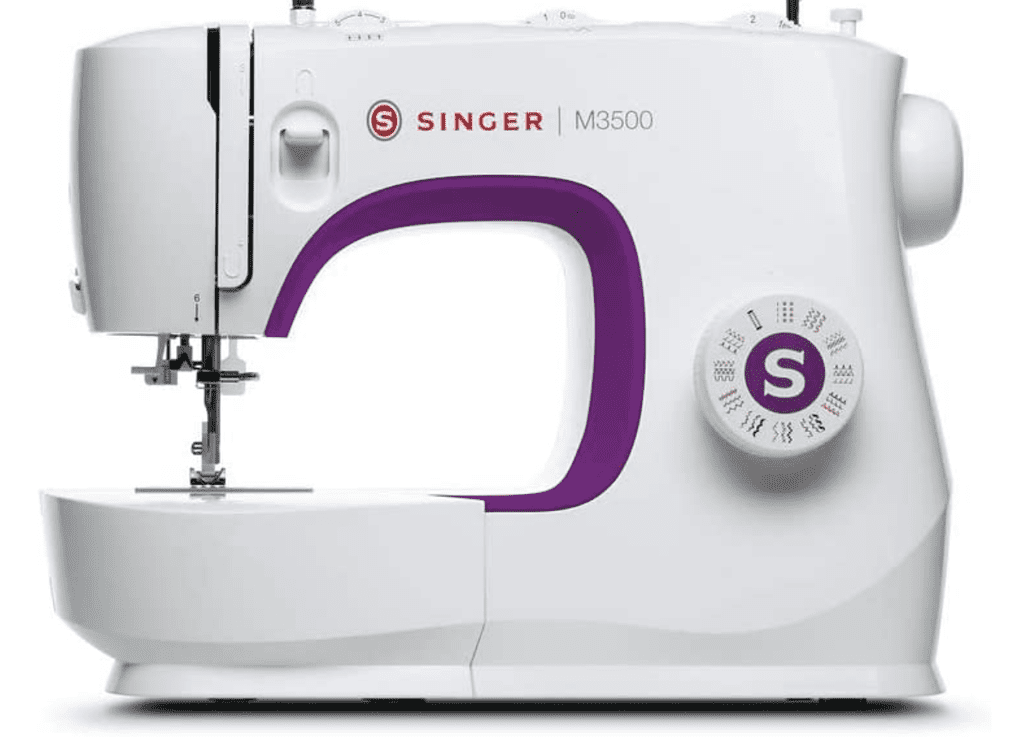
As with any sewing machine purchase, it is advisable to consider one’s skill level, intended usage, and long-term sewing goals when selecting a machine that best aligns with individual needs.
If you engage in sewing for a few hours per week as a recreational activity, Singer models can certainly provide the quality and affordability you require.
Furthermore, they are well-suited to meet the needs of hobbyists and casual sewers. However, if you operate an Etsy business or engage in extensive sewing sessions throughout the day, you may require a machine that can withstand the demands of heavy usage.
For beginners in particular, Singer offers several models that are ideal for getting started. These include the 7363 Confidence Machine, the Start 1304 machine, and the M1500.
These modern machines feature a user-friendly design, offering simplicity and ease of use. Additionally, they provide a wide range of capabilities to accommodate different sewing projects.
Moreover, these models are known for their affordable pricing, making them accessible to those on a budget.
It is important to consider your sewing requirements, frequency of use, and long-term goals when choosing a sewing machine.
Singer models can be a reliable choice for hobbyists and beginners, offering the right balance of functionality, user-friendliness, and affordability.
How Old Is My Singer Sewing Machine?
To determine the year of manufacture for your Singer sewing machine, locating the model of your machine is the most convenient method.
You can find the model number engraved on various parts of the machine. If you need assistance in identifying the model number, Singer provides helpful tips on their website.
The model number is typically located in one of the following areas, depending on the manufacturing year:
- Below the handwheel
- On the front panel above the needle
- Below the stitch length controller
- On a small metal plate situated on the front of the machine
By locating the model number, you can gather valuable information about your Singer sewing machine, including its year of production from the Singer sewing machine company.
After obtaining the model number of your Singer sewing machine, you can easily access valuable information by entering it into the search bar on Singer’s website.
This will allow you to find the specific sewing manual and other useful resources related to your machine.
Additionally, if you prefer, you can also conduct a simple Google search using the model number to discover the manufacturing year of that particular model.
By utilizing these methods, you can quickly access relevant information and enhance your understanding of your Singer sewing machine.
You can also use the serial number on your machine to find out when it was manufactured.
Singer Sewing Machine Serial Numbers
Each Singer sewing machine possesses a unique serial number in addition to its model number. In some instances, these numbers can be found in the same location.
For example, older machines typically feature these numbers inscribed on a small metal plate situated on the front of the machine.
Conversely, newer models tend to place the serial number near the on/off switch or underneath the machine.
The serial number serves as an identifier that allows you to determine the model number, the year of production for your machine, and even its approximate value.
The International Sewing Machine Collectors Society offers a comprehensive database encompassing all Singer serial numbers.
By referencing this database, you can identify the age of your sewing machine based on its serial number, providing valuable insight into its historical significance.
Singer Sewing Machine Value
Singer sewing machine models typically range in price from $50 to $500, depending on factors such as the specific model and its collectibility.
However, there are rare collectible models that can fetch prices exceeding $2,000!
The value of antique and vintage sewing machines, in general, is determined by factors such as the year of production, the rarity of the machine, and its condition.
While some vintage models may sell for as low as fifty dollars, collectible machines like the Turtleback may occasionally command prices over $1,000.
However, most collectible antique sewing machines typically fall within the price range of $500 to $1,500.
The Featherweight, a highly sought-after model for both sewing and collecting, typically ranges in price from $400 to $600 on platforms like eBay or at antique stores.
However, the 222K variant, manufactured in Scotland, can command prices as high as $2,000 due to its rarity in today’s market.
Limited-production models often become coveted collector’s items due to their scarcity, and this is precisely why the Turtleback holds significant value today.
The condition of the machine also plays a crucial role in determining its worth.
Antique dealers employ a rating system to assess the appearance and working order of sewing machines, with a machine in excellent condition commanding a higher price compared to a rusty clunker retrieved from someone’s garage.
Furthermore, it generally holds true that older items tend to be more valuable.
A sewing machine manufactured in 1851 would typically hold more worth today than one made in 1980.
How Much Is My Singer Sewing Machine Worth?
Determining the average value of your sewing machine is a straightforward process. Begin by locating the model number of your machine.
Once you have the model number, you can conduct a search on popular online platforms such as eBay or Etsy. Look for listings of similar sewing machine models and see how other sellers have priced them.
This will give you a good idea of the average worth or market value of your sewing machine. Keep in mind that factors like condition, rarity, and included accessories may also influence the price.

Pricing an Antique Sewing Machine Today
To obtain pricing information for antique sewing machines, there are various sources you can explore. Online sellers, such as eBay or Amazon, can give you a general idea of what buyers are willing to pay for a particular sewing machine model.
Additionally, antique stores may have pricing information based on their expertise and market knowledge. Library books on sewing machine collectibles can provide valuable insights into the value of specific models.
If you require an official price for insurance or other purposes, it is advisable to consult an official appraiser who specializes in sewing machine appraisal.
An appraiser will thoroughly examine your machine, considering factors such as its condition, rarity, historical significance, and market demand, to determine its accurate value.
In addition to online resources and appraisers, books that document the historical prices of collectible items, including antique sewing machines, can provide valuable insights into the long-term value of your investment.
These books can give you a sense of how prices have fluctuated over time and help you gauge the potential worth of your sewing machine.
Additionally, visiting your local antique store and engaging in a conversation with the dealer can be another useful way to gather information.
These experts often have in-depth knowledge about different sewing machine models, including Singer, and may offer valuable insights or insider tips.
However, it’s important to manage expectations when it comes to selling antique and vintage sewing machines.
While some rare and highly sought-after models, like the Featherweight, can command higher prices, the majority of antique and vintage sewing machines typically sell for less than $200.
It’s unlikely that selling sewing machines will result in significant financial gains unless you possess a particularly valuable or rare model.
Where to Buy an Antique or Vintage Singer
There is a wide range of antique and vintage Singer sewing machines available for purchase online, often at affordable prices. Singer’s extensive production history means that there is a vast selection of models to choose from. You can also frequently find vintage Singer machines in antique stores, offering a chance to see and inspect the machines in person.
If you’re lucky, you might come across a vintage Singer machine at a yard sale, estate sale, auction, or thrift store.
However, when buying from these sources, it’s important to consider the machine’s condition. Machines found at thrift stores or similar places may not have been tested or properly maintained, so their working order may be uncertain.
If you prefer a machine in good working condition, it’s advisable to buy from a verified online seller or an antique store that can provide more information and assurance about the machine’s functionality.
When assessing the functionality of a vintage sewing machine, there are a few methods you can employ. If you have the opportunity to shop in person, you can plug in the machine and test it out.
Additionally, Ppay attention to the sound it produces while running, ensuring that it operates smoothly without any unusual noises or skipping.
In the case of online shopping or situations where you cannot physically interact with the machine, it’s important to inspect the photos provided by the seller for any visible issues.
Look out for cracks or signs of rust that may affect the machine’s performance. If the antique sewing machine is housed in a wooden cabinet, examine the condition of the wood, ensuring it appears well-maintained and free from significant damage.
Additionally, the presence of decorative elements, such as painted flowers or gold leaf, can influence the machine’s value and should be considered as well.
However, if your primary goal is to acquire a machine for personal use, the aesthetic aspects may be less important than the machine’s operational condition.
Value of Old Singer Sewing Machine in Wood Cabinet
The value of an antique Singer sewing machine housed in a wooden cabinet is influenced by factors such as the model number and overall condition, much like any other vintage sewing machine.
However, machines in wooden cabinets often carry additional value due to their age and historical significance.
The condition of the cabinet itself is an important consideration when determining the machine’s value.
Early Singer treadle machines were commonly sold in wooden cabinets, so antique and vintage models housed in wooden cabinets typically originate from the late 19th century or early 20th century.
However, it’s worth noting that the collectibility of sewing machines is largely determined by their rarity. Since Singer produced a large number of machines, many of them do not command high prices on the market.
If your machine is in good working order, with smooth operation and the ability to sew, its value will generally increase regardless of the specific model number.
On platforms like eBay, vintage sewing machines with functional cabinets can typically be found with an average price range of $200 to $300.
3 Newer machines with FREE shipping
We love these machines whether it your very first machine or you own older models and looking to upgrade.
They are an affordable price on the market today and many come with LCD screens and, of course, an instruction manual.
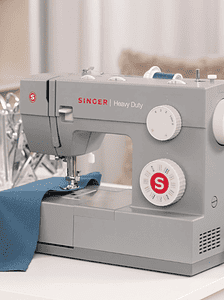

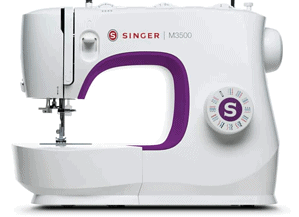
Conclusion
For a span of one hundred years, from 1850 to 1950, the Singer Company held a firm grip on the sewing machine market.
Among the collectible antique models that have stood the test of time are the Turtleback and the Featherweight, cherished by enthusiasts.
The appeal of vintage Singer machines endures today due to their exceptional durability. Notably, the Singer 221 and the Singer 403a are among the top choices for contemporary sewing needs.
However, every home sewer often has their personal favorite Singer model that they hold dear.
Other Sewing Resources:
If you are new to sewing, we recommend that you start by learning the basics and starting with a simple project like the potholder.
Start with:
Fabric Giveaway
Enter our monthly fabric giveaway. Simply complete the tasks daily and you will be entered into the drawing. Winner will be randomly drawn on the first day of the month and notified via email
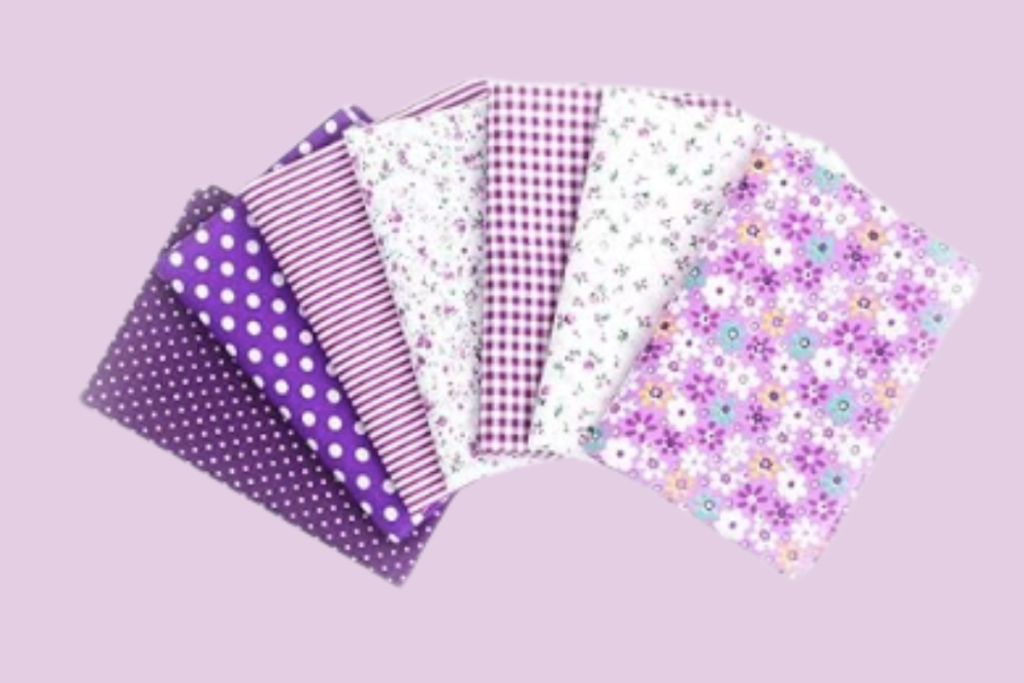

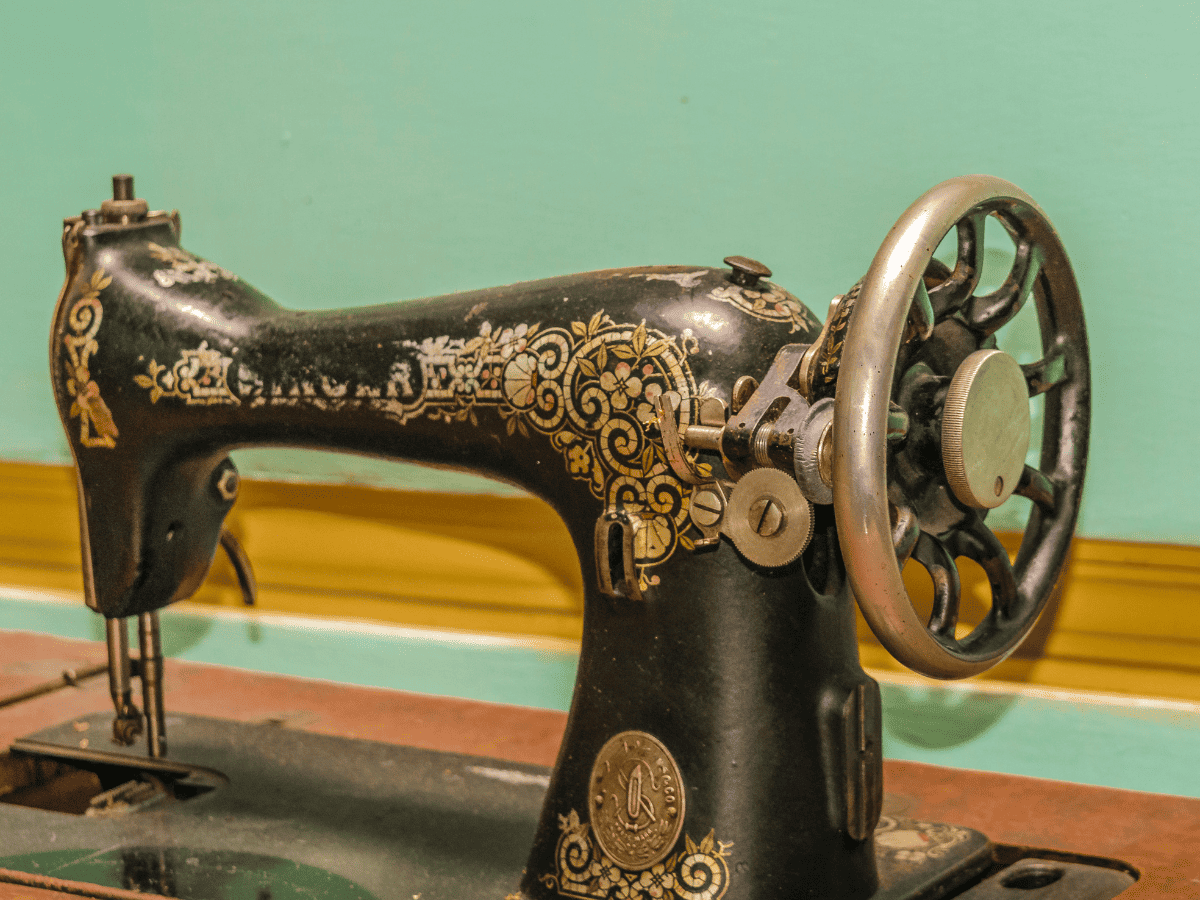
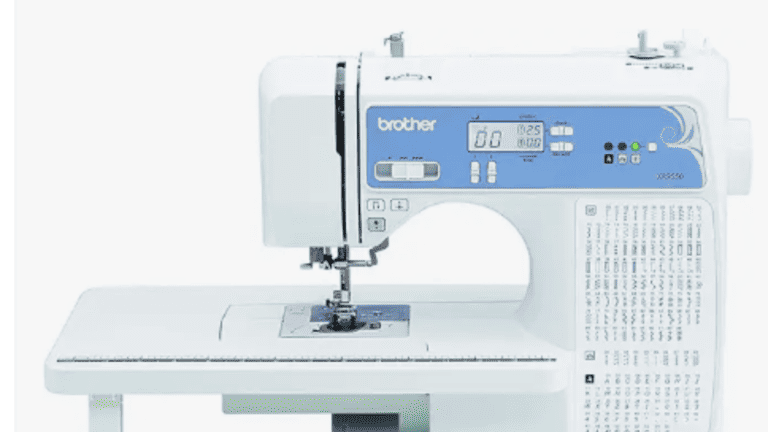

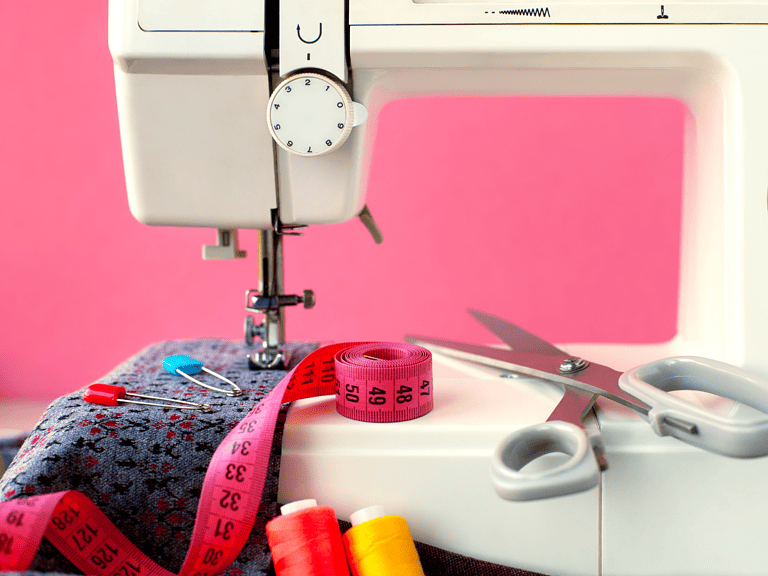
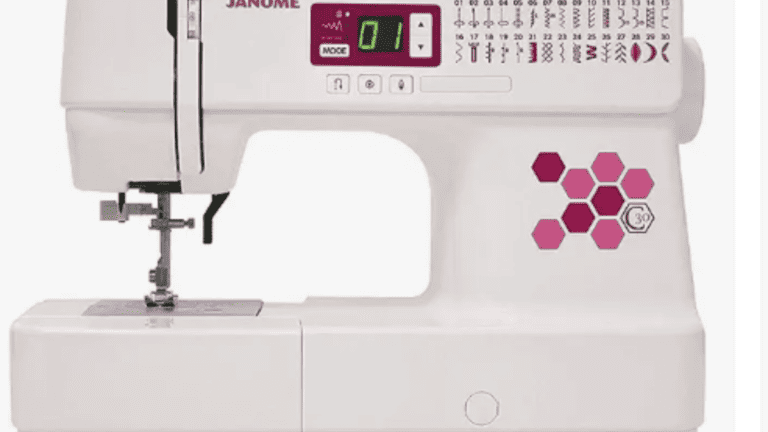
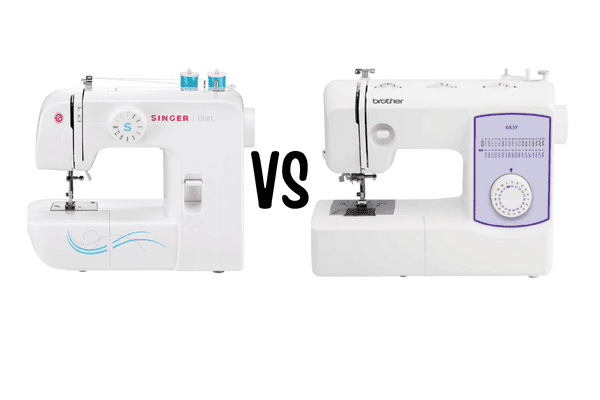
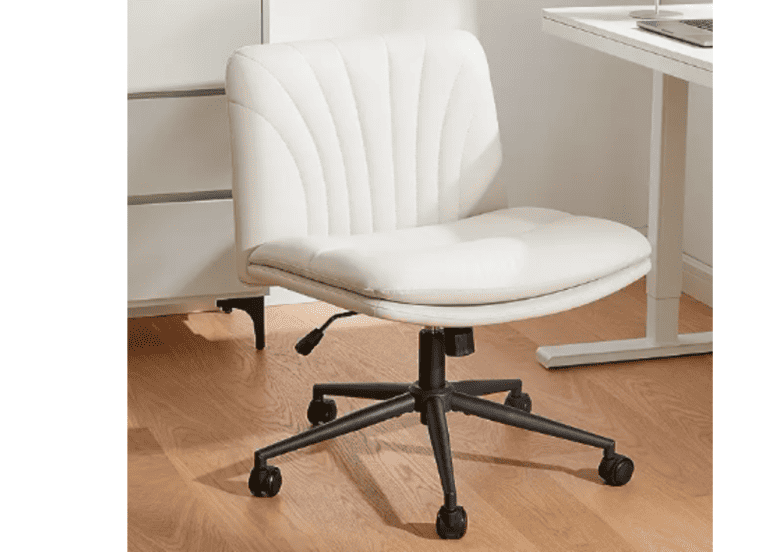
One Comment